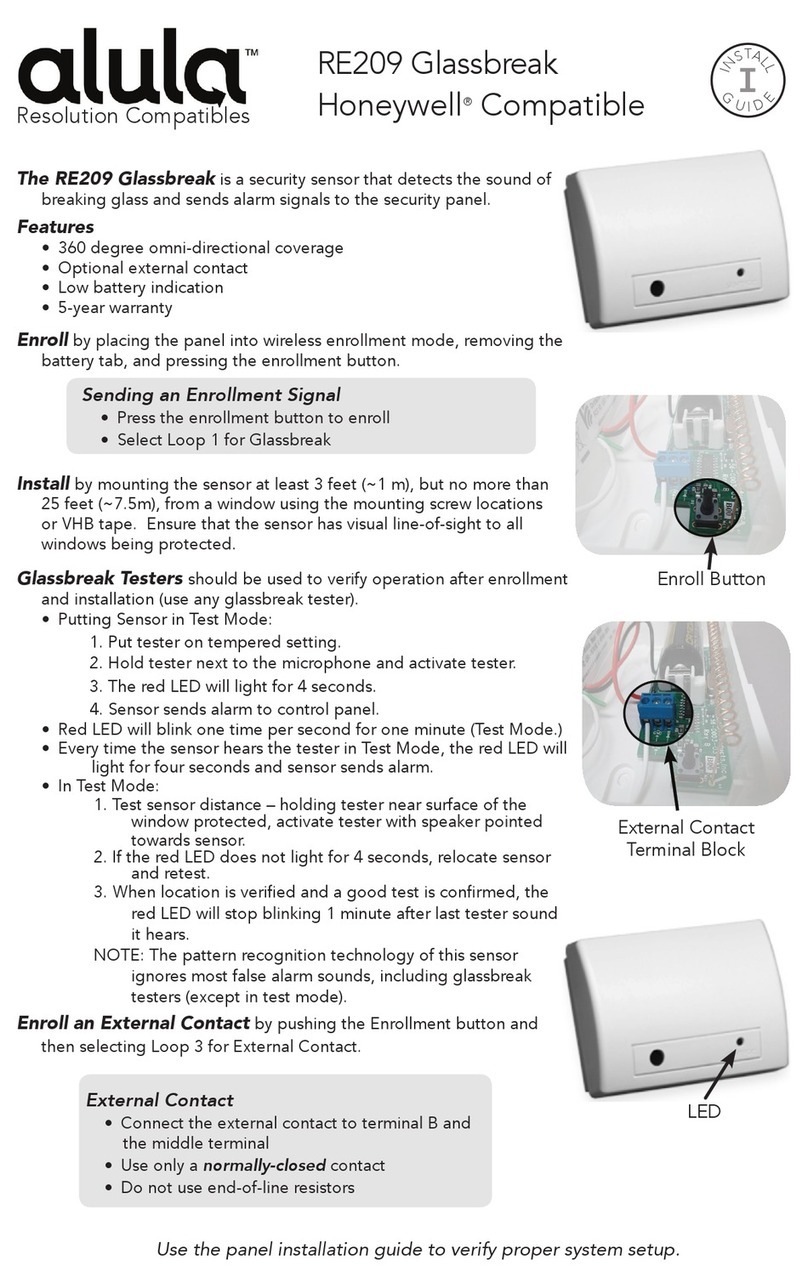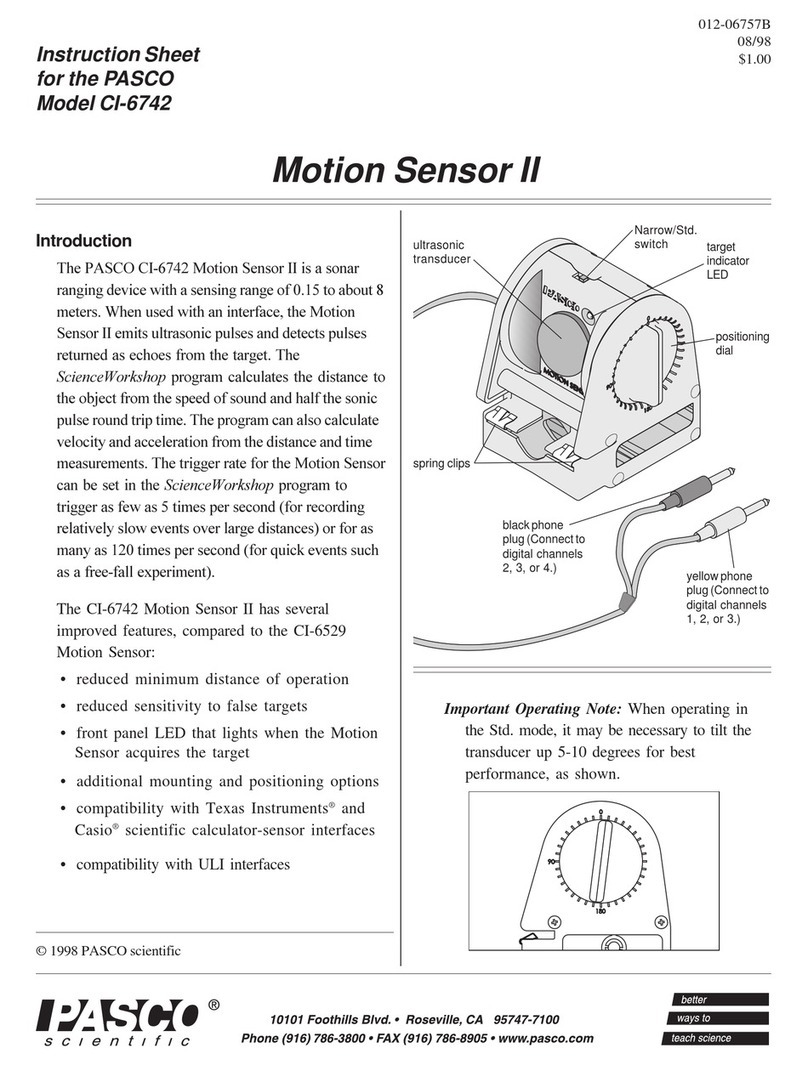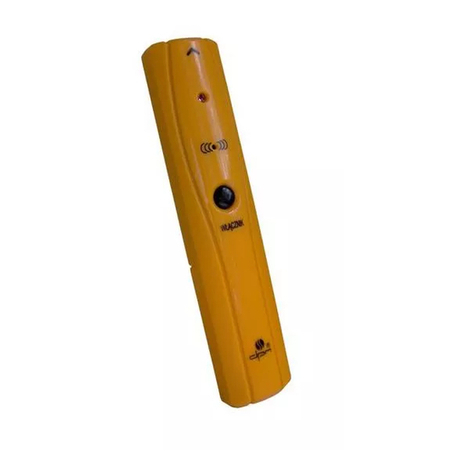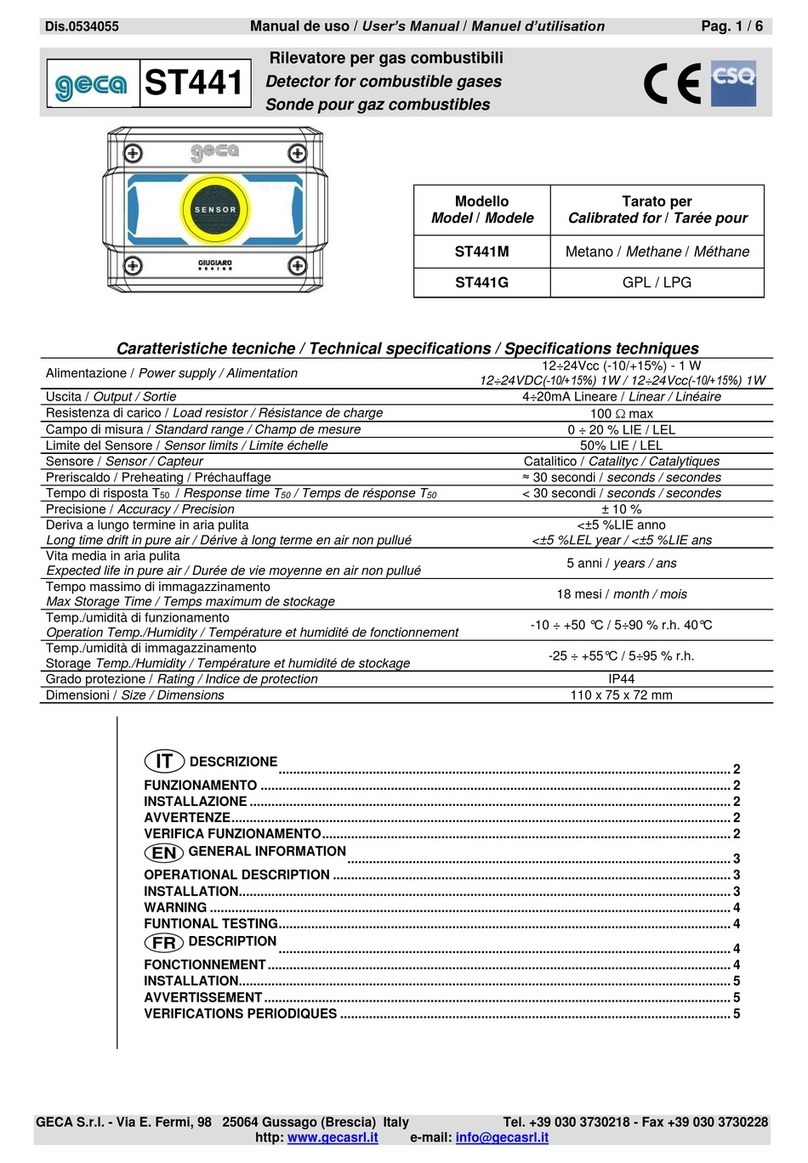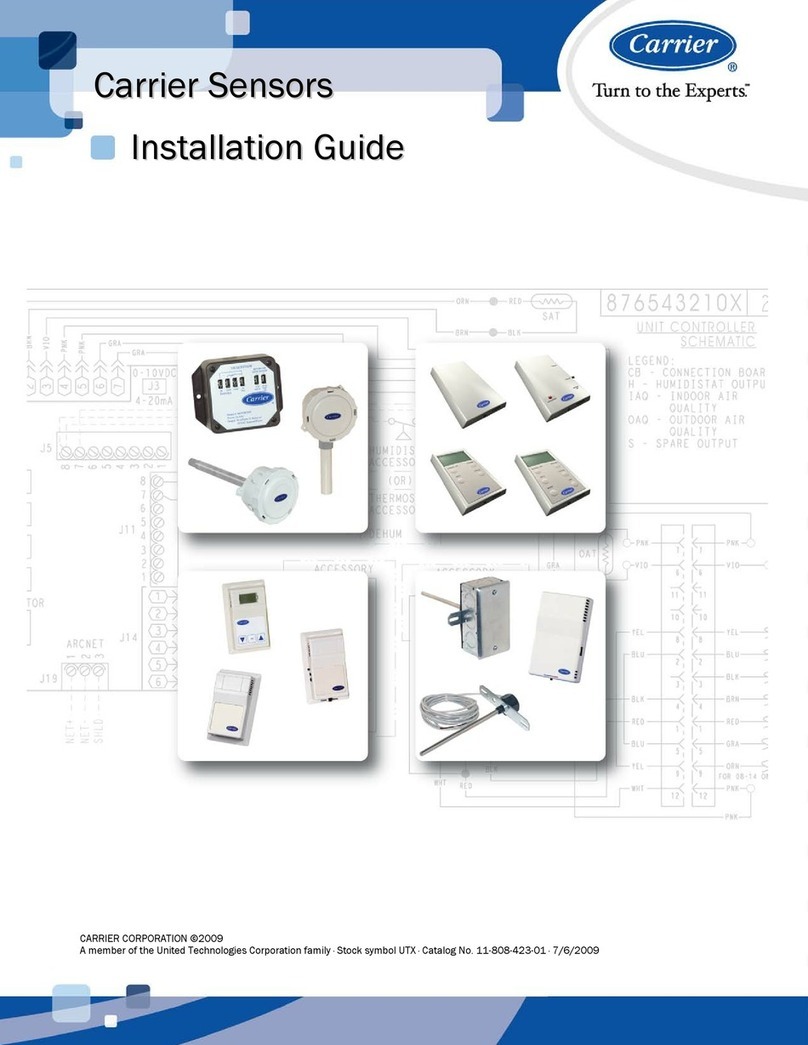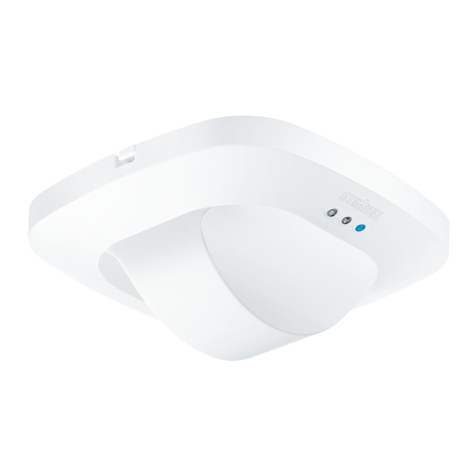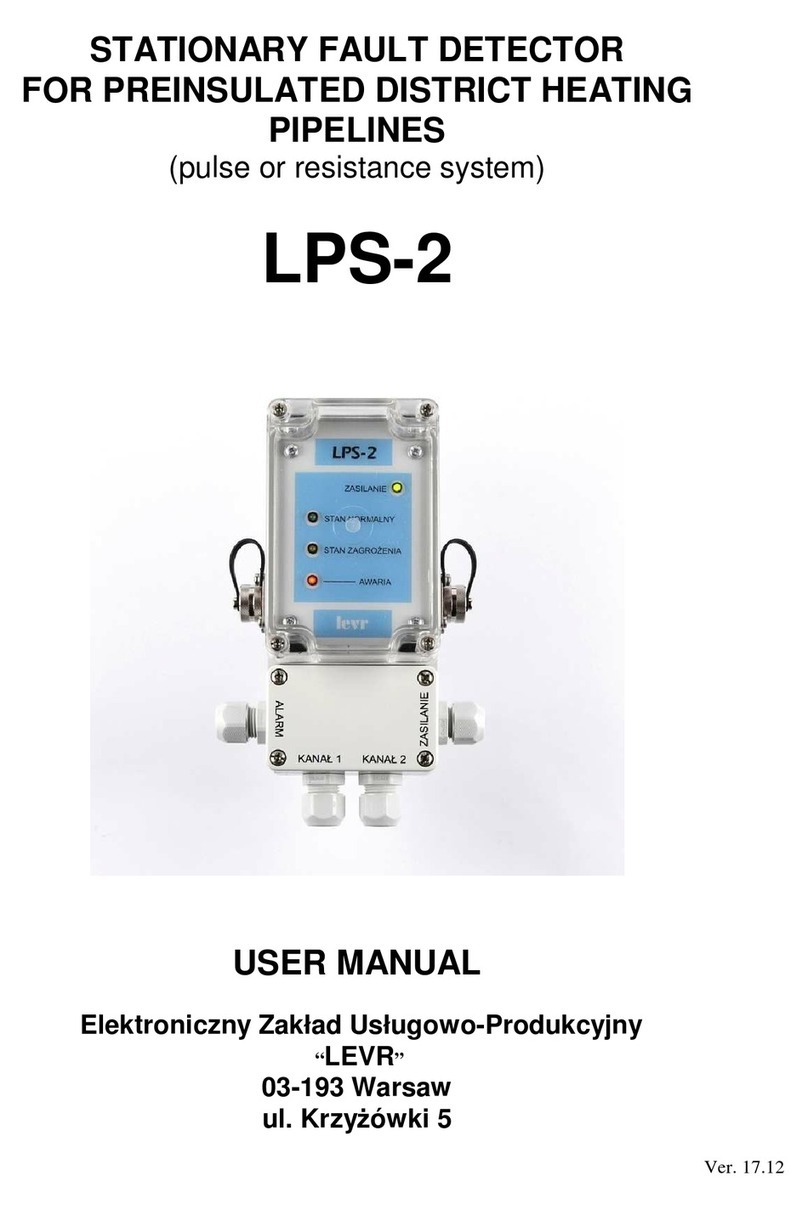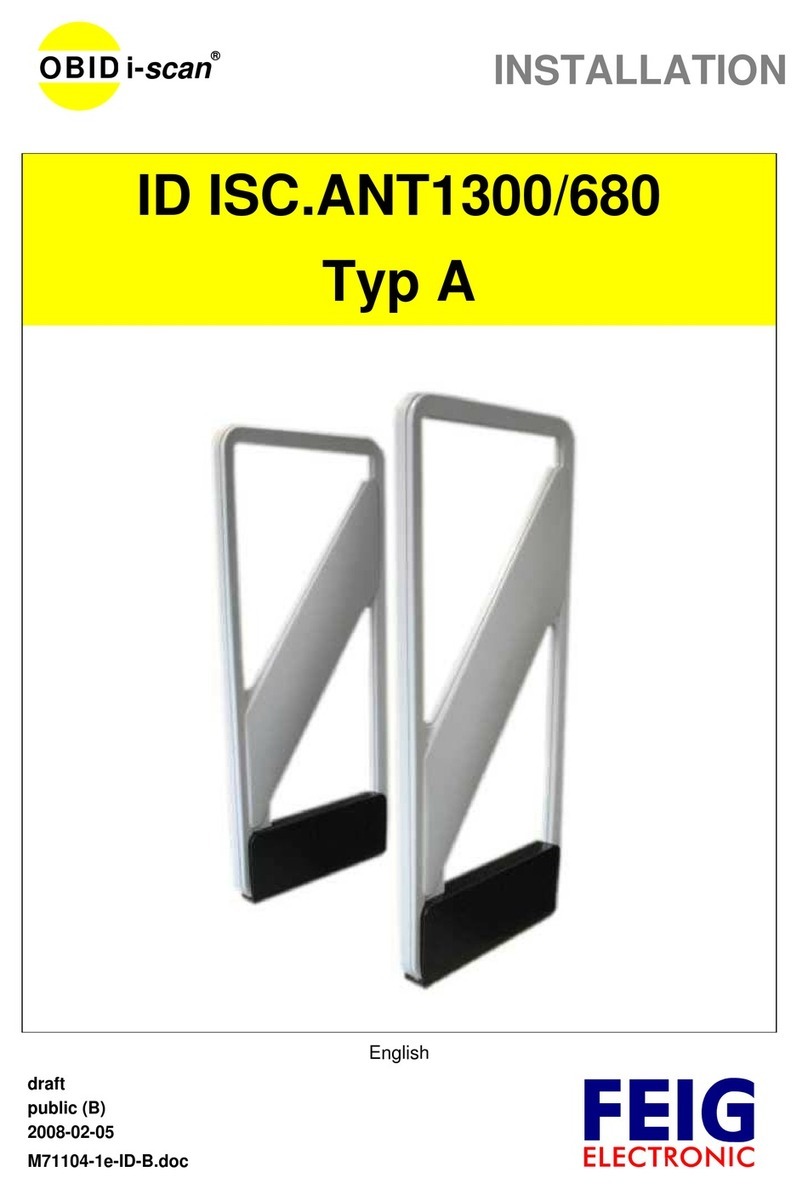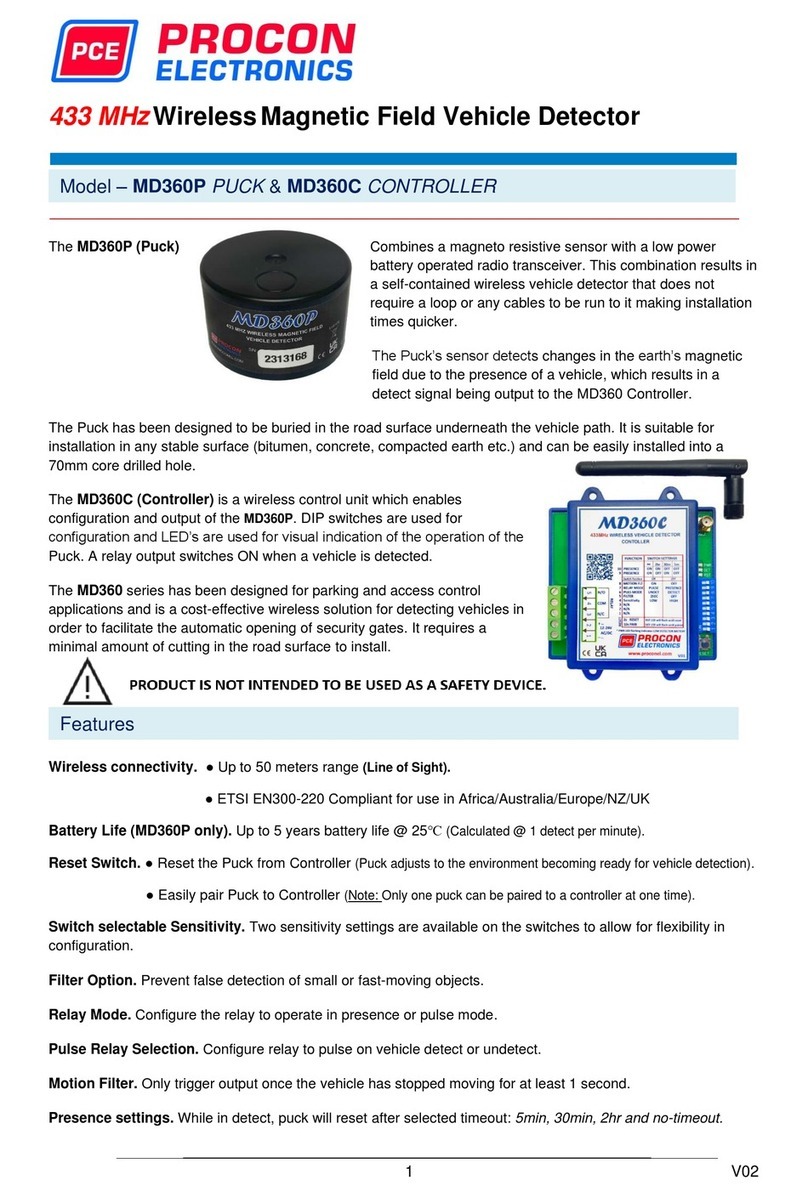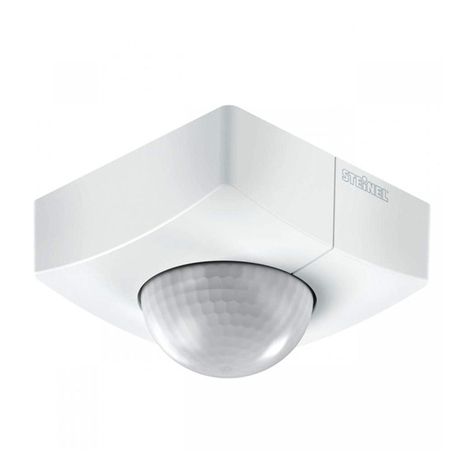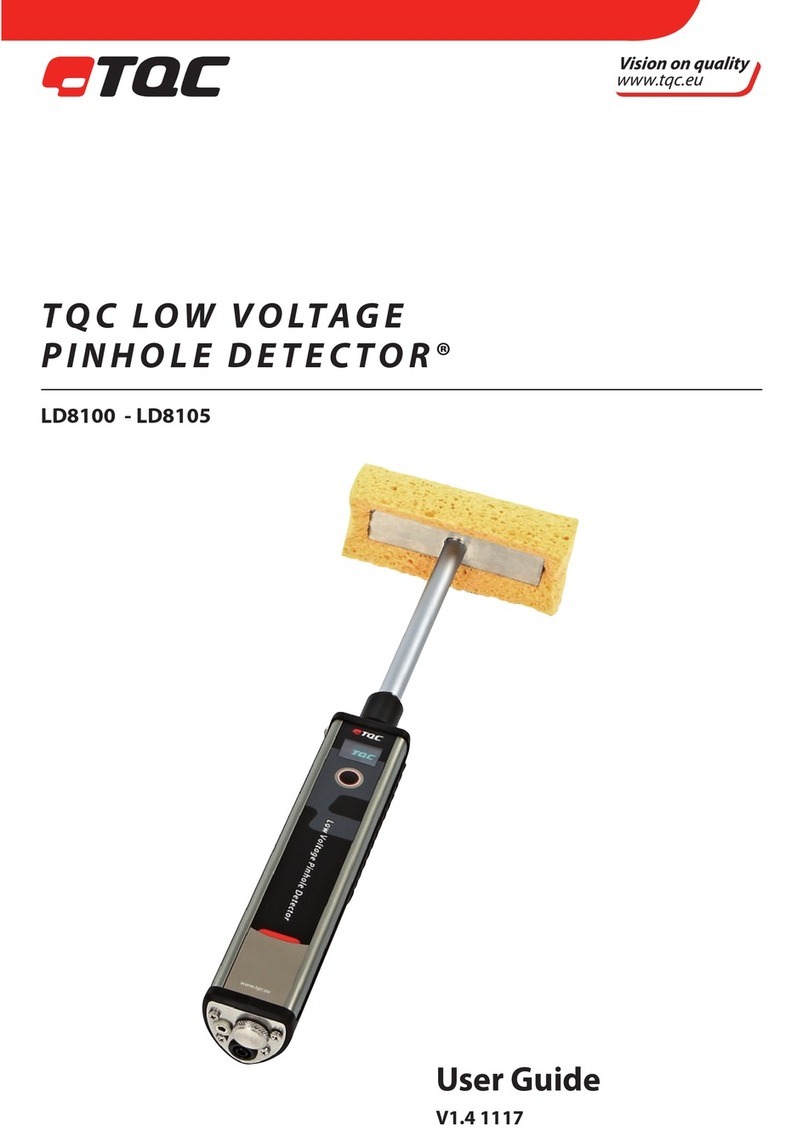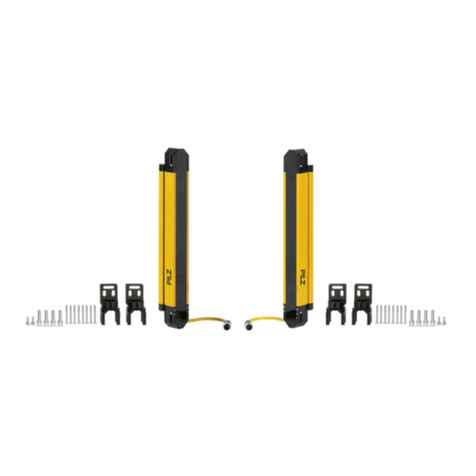Voith BTG Mutek PCD-06 User manual

Operation Manual
MütekTM PCD-06 (Light / Standard / Premium)
Particle Charge Detector

Copyright© 2021 BTG Instruments AB
The contents of this document are subject to revision without notice due to continued progress
in methodology, design, and manufacturing. BTG shall have no liability for any error or
damages of any kind resulting from the use of this document.
All rights reserved. No part of this document may be copied, photocopied, published,
reproduced, translated or converted into electronic or machine-readable form
without written permission of BTG Instruments AB.
Original Instructions
BTG Instruments AB, 2021

List of contents
Chapter Paragraph Title Page
List of contents
© BTG 2021 Operation Manual Mütek
TM
PCD-06 3
I. Basic safety
instructions
1.1 Manufacturer’s liability . . . . . . . . . . . . . . . . . . . . . . 7
1.2 Intended applications of the PCD-06 . . . . . . . . . . . 8
1.3 Non-legitimate use . . . . . . . . . . . . . . . . . . . . . . . . . 8
1.4 Qualification of personnel . . . . . . . . . . . . . . . . . . . . 8
1.5 General safety directions . . . . . . . . . . . . . . . . . . . . 9
1.6 Informal safety directions . . . . . . . . . . . . . . . . . . . . 9
1.7 Spare parts and expendables. . . . . . . . . . . . . . . . . 9
1.8 Symbols . . . . . . . . . . . . . . . . . . . . . . . . . . . . . . . . . 9
1.9 Packaging & transport . . . . . . . . . . . . . . . . . . . . . . 10
II. Product description 2.1 Theoretical background . . . . . . . . . . . . . . . . . . . . . 11
2.1.1 Measuring principle . . . . . . . . . . . . . . . . . . . . . . . . 12
2.1.2 Calculation of charges . . . . . . . . . . . . . . . . . . . . . . 13
2.1.3 Determination of the isoelectric point . . . . . . . . . . . 14
2.1.4 Titrations curves . . . . . . . . . . . . . . . . . . . . . . . . . . . 14
2.1.4.1 Colloidally dissolved particles . . . . . . . . . . . . . . . . . . . . . . . . . . 14
2.1.4.2 Solid particles . . . . . . . . . . . . . . . . . . . . . . . . . . . . . . . . . . . . . . 15
2.1.4.3 Heterogeneous stock systems . . . . . . . . . . . . . . . . . . . . . . . . . 15
2.2 Applications . . . . . . . . . . . . . . . . . . . . . . . . . . . . . . 15
2.3 Designation of the PCD-06. . . . . . . . . . . . . . . . . . . 16
2.3.1 Type plates PCD-06 . . . . . . . . . . . . . . . . . . . . . . . . 16
2.3.2 Service sticker PCD-06 . . . . . . . . . . . . . . . . . . . . . 16
2.4 Technical data . . . . . . . . . . . . . . . . . . . . . . . . . . . . 17
2.5 Scope of delivery . . . . . . . . . . . . . . . . . . . . . . . . . . 18
2.5.1 Mütek™ PCD-06 . . . . . . . . . . . . . . . . . . . . . . . . . . 18
III. System layout and
functions
3.1 Description of PCD-06 . . . . . . . . . . . . . . . . . . . . . . 19
3.1.1 Measuring cell . . . . . . . . . . . . . . . . . . . . . . . . . . . . 21
3.1.2 pH set (optional) . . . . . . . . . . . . . . . . . . . . . . . . . . . 21
IV. Installation 4.1 Safety rules. . . . . . . . . . . . . . . . . . . . . . . . . . . . . . . 23
4.2 Personnel requirements . . . . . . . . . . . . . . . . . . . . . 23
4.3 Preparations onsite. . . . . . . . . . . . . . . . . . . . . . . . . 23
4.4 Installation environment . . . . . . . . . . . . . . . . . . . . . 23
4.4.1 Installation site . . . . . . . . . . . . . . . . . . . . . . . . . . . . 23
4.4.2 External power supply . . . . . . . . . . . . . . . . . . . . . . 23
4.4.3 Sample specification. . . . . . . . . . . . . . . . . . . . . . . . 24
4.5 Solutions. . . . . . . . . . . . . . . . . . . . . . . . . . . . . . . . . 25
4.5.1 Titrants . . . . . . . . . . . . . . . . . . . . . . . . . . . . . . . . . . 25
4.5.2 Acids/bases . . . . . . . . . . . . . . . . . . . . . . . . . . . . . . 26
4.5.3 Cleaning solution . . . . . . . . . . . . . . . . . . . . . . . . . . 26

List of contents
Chapter Paragraph Title Page
4 Operation Manual Mütek
TM
PCD-06 © BTG
4.6 Start-up procedure . . . . . . . . . . . . . . . . . . . . . . . . . 27
4.6.1 PCD-06 Standard and Premium. . . . . . . . . . . . . . . 27
4.6.2 Connect PCD-06 Light . . . . . . . . . . . . . . . . . . . . . . 27
4.6.3 Replace a Titrant . . . . . . . . . . . . . . . . . . . . . . . . . . 28
4.6.4 Rinse the System . . . . . . . . . . . . . . . . . . . . . . . . . . 28
V. Measuring 5.1 Safety rules. . . . . . . . . . . . . . . . . . . . . . . . . . . . . . . 29
5.2 Personnel requirements . . . . . . . . . . . . . . . . . . . . . 29
5.3 Overview Main Screens . . . . . . . . . . . . . . . . . . . . . 30
5.4 Sample preparation . . . . . . . . . . . . . . . . . . . . . . . . 31
5.4.1 Filtration . . . . . . . . . . . . . . . . . . . . . . . . . . . . . . . . . 31
5.4.2 Centrifugation . . . . . . . . . . . . . . . . . . . . . . . . . . . . . 31
5.4.3 Screening . . . . . . . . . . . . . . . . . . . . . . . . . . . . . . . . 31
5.4.4 Back titration. . . . . . . . . . . . . . . . . . . . . . . . . . . . . . 32
5.4.4.1 Example for back titration . . . . . . . . . . . . . . . . . . . . . . . . . . . . . 32
5.5 Fill sample into the measuring cell . . . . . . . . . . . . . 33
5.6 Measuring with the Mütek™ PCD-06 Light . . . . . . 34
5.6.1 Manual Titration . . . . . . . . . . . . . . . . . . . . . . . . . . . 34
5.6.1.1 Start measurement . . . . . . . . . . . . . . . . . . . . . . . . . . . . . . . . . . 34
5.6.1.2 Start titration . . . . . . . . . . . . . . . . . . . . . . . . . . . . . . . . . . . . . . . 35
5.6.2 Automatic titration with external titrator . . . . . . . . . 35
5.6.2.1 Start measurement . . . . . . . . . . . . . . . . . . . . . . . . . . . . . . . . . . 35
5.6.2.2 Start titration . . . . . . . . . . . . . . . . . . . . . . . . . . . . . . . . . . . . . . . 35
5.7 Measuring with the Mütek™ PCD-06 Standard or
Premium. . . . . . . . . . . . . . . . . . . . . . . . . . . . . . . . . 36
5.7.1 Start Measurement . . . . . . . . . . . . . . . . . . . . . . . . . 36
5.7.2 Result handling Mütek™ PCD-06. . . . . . . . . . . . . . 37
5.7.3 Result transfer to a USB stick. . . . . . . . . . . . . . . . . 37
5.7.3.1 Transfer Parameter to a USB stick . . . . . . . . . . . . . . . . . . . . . . 38
5.8 Methods . . . . . . . . . . . . . . . . . . . . . . . . . . . . . . . . . 38
5.8.1 Setting of standard methods. . . . . . . . . . . . . . . . . . 39
5.8.2 General Method Settings . . . . . . . . . . . . . . . . . . . . 40
5.8.3 Volume . . . . . . . . . . . . . . . . . . . . . . . . . . . . . . . . . . 41
5.8.4 Time . . . . . . . . . . . . . . . . . . . . . . . . . . . . . . . . . . . . 42
5.9 Settings. . . . . . . . . . . . . . . . . . . . . . . . . . . . . . . . . . 43
5.9.1 About device . . . . . . . . . . . . . . . . . . . . . . . . . . . . . 43
5.9.2 Titrant Settings . . . . . . . . . . . . . . . . . . . . . . . . . . . . 43
5.9.3 pH Calibration (optional). . . . . . . . . . . . . . . . . . . . . 44
5.9.4 Date and Time . . . . . . . . . . . . . . . . . . . . . . . . . . . . 45
5.9.5 Calibration . . . . . . . . . . . . . . . . . . . . . . . . . . . . . . . 45
VI. Diagnostics and
troubleshooting
6.1 Safety instruction . . . . . . . . . . . . . . . . . . . . . . . . . . 47
6.2 Personnel requirements . . . . . . . . . . . . . . . . . . . . . 47
6.3 Table of malfunction . . . . . . . . . . . . . . . . . . . . . . . . 47
6.3.1 Error messages on the PCD-06 Smart . . . . . . . . . 47
6.3.2 Basic faults . . . . . . . . . . . . . . . . . . . . . . . . . . . . . . . 48

List of contents
Chapter Paragraph Title Page
© BTG 2021 Operation Manual Mütek
TM
PCD-06 5
VII. Maintenance 7.1 Cleaning . . . . . . . . . . . . . . . . . . . . . . . . . . . . . . . . . 49
7.1.1 Cleaning the instrument . . . . . . . . . . . . . . . . . . . . . 49
7.1.2 Cleaning the measuring cell . . . . . . . . . . . . . . . . . . 49
7.2 Maintenance . . . . . . . . . . . . . . . . . . . . . . . . . . . . . . 49
7.2.1 Personnel requirements . . . . . . . . . . . . . . . . . . . . . 49
7.2.2 Functional testing . . . . . . . . . . . . . . . . . . . . . . . . . . 49
7.2.2.1 Basic test of PCD-06 without measuring cell . . . . . . . . . . . . . . 49
7.2.3 Standard titration . . . . . . . . . . . . . . . . . . . . . . . . . . 49
7.2.4 Checking the streaming potential . . . . . . . . . . . . . . 51
7.2.4.1 Electrostatic charging of the measuring cell . . . . . . . . . . . . . . . 51
7.2.5 Functional testing of the pH electrode . . . . . . . . . . 51
7.3 Proper handling of the pH electrode. . . . . . . . . . . . 51
7.4 Yearly LAB Check™ inspection . . . . . . . . . . . . . . . 52
VIII. Shutting down the
system, storage and
disposal
8.1 Safety instructions . . . . . . . . . . . . . . . . . . . . . . . . . 53
8.2 Personnel requirements . . . . . . . . . . . . . . . . . . . . . 53
8.3 Shutting down the system . . . . . . . . . . . . . . . . . . . 53
8.4 Storage . . . . . . . . . . . . . . . . . . . . . . . . . . . . . . . . . . 53
8.5 Disposal . . . . . . . . . . . . . . . . . . . . . . . . . . . . . . . . . 53
8.5.1 Official Regulations. . . . . . . . . . . . . . . . . . . . . . . . . 53
IX. Parts list 9.1 Spare parts list . . . . . . . . . . . . . . . . . . . . . . . . . . . . 55
9.2 Options . . . . . . . . . . . . . . . . . . . . . . . . . . . . . . . . . . 55
9.3 Consumables . . . . . . . . . . . . . . . . . . . . . . . . . . . . . 56

List of contents
Chapter Paragraph Title Page
6 Operation Manual Mütek
TM
PCD-06 © BTG

© BTG 2021 Operation Manual Mütek
TM
PCD-06 7
I. Basic safety instructions
I. Basic safety instructions
1.1 Manufacturer’s liability
Instructions in the operation manual
- All users of the Mütek™ PCD-06 have to observe
this operation manual and to strictly adhere to the
basic safety instructions and safety rules in order to
ensure safe handling and reliable operation of the
Mütek
TM
PCD-06
- This operation manual contains the most important
safety directions to ensure the operational safety of
the Mütek™ PCD-06
- In addition, all applicable accident prevention regu-
lations have to be met for the specific location
where the device is set up
Obligations of the user
The warranty and the service quality guarantee shall
only be valid if the following conditions are met:
- The Mütek™ PCD-06 may only be operated by per-
sons who are proven to have been thoroughly
trained and authorized by BTG Instruments AB
- The user has to observe all instructions by BTG Ins-
truments AB regarding operation and maintenance
of the Mütek™ PCD-06
- Storage and maintenance of the instrument shall be
in accordance with the instructions given by BTG
Instruments AB
- Use of any parts other than the original spare parts
and expendables of BTG Instruments AB will cause
instant termination of warranty, availability and gua-
rantee claims
- Any faults which may affect operational safety of the
system have to be eliminated immediately
- When the system is obviously damaged or parts
inside the system are loose or the system does not
work, the Mütek™ PCD-06 has to be shut down.
Hazards involved in handling the Mütek
TM
PCD-06
Particle Charge Detector
The Mütek™ PCD-06 has been built to reflect state-of-
the-art techniques and to meet recognized safety rules.
However, its operation may entail the risk of accidents
for users or third parties or of damage to the Mütek™
PCD-06 or to other property. The Mütek™ PCD-06 shall
only be used:
- For the intended applications outlined in this opera-
tion manual
- When it is in a condition meeting all safety rules
Users are obliged to immediately eliminate any faults
that may affect operational safety.
Warranty and liability
This instrument was built and tested in accordance with
EU Guidelines 2014/30/EC and 2014/35/EC. It com-
plied with all safety regulations at the time it left the fac-
tory. To maintain this condition and ensure safe
operation, the user must observe the safety instructions
and warning notes contained in this op-eration manual.
It is the responsibility of the owner and user to make
sure that all safety devices and requirements concer-
ning the operating environment of the instrument are
adequately provided for.
Basically, the General Terms and Conditions of BTG
Instruments AB will apply. These will be made available
to the operator of the Mütek™ PCD-06 at the latest on
the day the sales contract is concluded.
BTG Instruments AB shall not be liable for any warranty
or liability claims for personal injury or property damage
that may be consequential to one or several of the follo-
wing causes:
- Non-legitimated use of the Mütek™ PCD-06
- Opening of the instrument on the rear or at the top
plate or at the bottom plate of the system
- Inexpert installation/ assembly, commissioning,
operation and servicing of the Mütek™ PCD-06
- Operation of the Mütek™ PCD-06 although its saf-
ety devices and protection facilities are defective,
inexpertly mounted or malfunctioning
- Failure of the user/ operator to adhere to the inst-
ructions given in this operation manual regarding
transport, storage, assembly, commissioning, ope-
ration and maintenance of the Mütek™ PCD-06
- Modifications made to the Mütek™ PCD-06 without
prior approval of BTG Instruments AB
- Inadequate routine checks of parts/assemblies of
the Mütek™ PCD-06 which are subject to wear
- Inexpert repairs
- Catastrophes caused by the effects of foreign
objects or by Acts of God
Trouble-free and safe operation of the instrument is only
possible subject to correct transport, storage, installa-
tion and assembly and to careful handling and main-
tenance.
If the Mütek™ PCD-06 is sent in for repair, the whole
system has to be returned, including measuring cell and
displacement piston.
The guarantee for the Mütek™ PCD-06 is one year star-
ting as of the date of delivery.

8 Operation Manual Mütek
TM
PCD-06 © BTG 2021
I. Basic safety instructions
Regarding defects covered by the guarantee, BTG Inst-
ruments AB shall not be liable for any dam-ages excee-
ding the cost price.
The guarantee shall only extend to parts found defec-
tive by BTG Instruments AB. The company is entitled to
decide whether such parts are to be exchanged or
repaired provided the parts have been returned in time
to the nearest authorized retailer of BTG Instruments
AB.
This guarantee does not extend to parts that have been
repaired or modified by the user/ operator without the
prior written approval of an authorized retailer of BTG
Instruments AB.
BTG Instruments AB neither assumes any obligation in
connection with the sale of the instrument nor has it ins-
tructed any other person to undertake such obligation.
Caution
Any changes or modifications not expressly approved
by the party responsible for compliance could void the
user’s authority to operate the equipment.
Disclaimer of liability
BTG Instruments AB has checked the contents of the
printed manual for consistency with the hardware &
software described. However, since deviations cannot
be entirely excluded, BTG Instruments AB does not
accept responsibility for absolute consistency. The cont-
ents of this manual are regularly revised and any cor-
rections that may be necessary will be included in later
issues.
BTG Instruments AB reserves the right to make techni-
cal changes to this document.
1.2 Intended applications of the PCD-06
The Mütek™ PCD-06 shall be used exclusively for the
purposes defined in this operation manual and in the
technical description and shall only be operated in con-
junction with external instruments and components
recommended or approved by BTG Instruments AB.
The Mütek™ PCD-06 Particle Charge Detector shall
solely be used for charge identification of aqueous
samples and for determining their isoelectric point. The
instrument is exclusively intended for indoor use.
Since any other or further-reaching application is consi-
dered illegitimate by BTG Instruments AB, the company
shall not be held liable for damages resulting from such
use.
To comply with the intended applications as defined
above, the user/operator is required
- To follow all the instructions in this operation
manual and
- To perform all inspection and maintenance tasks as
specified
1.3 Non-legitimate use
Illegitimate use (misuse) is defined as follows:
- Any usage other than the allowed usage defined
above or extending beyond the defined usage
- Failure to follow the instructions given in this opera-
tion manual
- Failure to observe the safety directions
- Failure to remedy immediately - i.e. before continu-
ing operation of the instrument - any defect which
might endanger its operational safety and reliability.
- Any unauthorized modification to the instrument
1.4 Qualification of personnel
The instrument may be commissioned and operated
only by qualified personnel. Qualified personnel as
defined in the safety instructions of this operation
manual are persons trained and instructed by BTG Inst-
ruments AB.

© BTG 2021 Operation Manual Mütek
TM
PCD-06 9
I. Basic safety instructions
1.5 General safety directions
For all installation, operation, maintenance and repair
work performed on the Mütek™ PCD-06 Particle
Charge Detector, it is essential that the directions given
below be followed:
- Installation and operation have to be performed by
trained personnel
- Maintenance work described in this manual shall
exclusively be carried out by trained staff
- Maintenance and repair work not described in this
manual shall only be performed by BTG In-stru-
ments or by personnel trained by an authorized
service agent of BTG Instruments AB
- When working on electrical and electronic parts, be
sure to power off the instrument at the main switch
and to disconnect the power plug
- When replacing defective parts, make sure to use
only original spare parts and expendables
- When handling hazardous materials, please
observe the directions for protective equipment,
industrial hygiene and proper disposal
- Hazardoous chemicals should be handled by
trained personnel according to regulation
- MSDS for any hazardous chemicals sold from BTG
is available on https://my.btg.com/en/
1.6 Informal safety directions
Take care to keep this operation manual handy at all
times on the Mütek™ PCD-06. In addition, make sure
that documentation on general and local accident pre-
vention and environmental protection standards is near
at hand and strictly adhered to.
Keep all safety instructions and warnings on the
Mütek™ PCD-06 in a legible condition and replace, if
necessary.
1.7 Spare parts and expendables
Be sure to use exclusively original spare parts and
expendables to ensure operational safety of the
Mütek™ PCD-06 and to safeguard your guarantee
claims. Please order these items from your local autho-
rized representative of BTG Instruments AB.
1.8 Symbols
The following symbols and notices are used in this ope-
ration manual to designate hazards or to provide special
information:
Information
"Information" includes tips for operators and provides
useful information.
It helps you make optimum use of all functions of the
Mütek™ PCD-06.
Hint
"Hint" refers to expert handling and operation of the
Mütek™ PCD-06.
Non-adherence to these hints may lead to operational
failures of the Mütek™ PCD-06 or to trouble in its
environment.
Caution
"Caution" refers to a potentially dangerous situation.
Failure to observe this information may result in slight
personal injury or in damage to equipment.
Warning
"Warning" refers to the risk of accidents.
Failure to observe this information may result in severe
damage to health or even in life-threatening injuries.

10 Operation Manual Mütek
TM
PCD-06 © BTG 2021
I. Basic safety instructions
1.9 Packaging & transport
The Mütek™ PCD-06 Particle Charge Detector is a
compact and sturdy unit for which a plastic transporta-
tion box is available to enable measurements on site.
Information
It is recommended to ordering the plastic transportation
box to avoid transport damage.
Hint
The plastic transportation box is unsuitable for rail for-
warding or postal delivery of the instrument.
- To exclude transport damage, never put any additi-
onal items in the trolley.
- To avoid transport damage to the precision contact
pins, do not keep any small components in the
measuring chamber.
- At outdoor temperatures below +15 °C [59°F], let
the unit adjust to ambient temperature after trans-
port before putting it into operation.
Hint
If the Mütek™ PCD-06 is exposed to temperatures
below 0°C, the titrants might freezing causing damage
to the bottles and tubes. Therefore do not leave the ins-
trument in the trunk of your car at cold weather.

© BTG 2021 Operation Manual Mütek
TM
PCD-06 11
II. Product description
II. Product description
2.1 Theoretical background
Whether a suspension of particles or a true solution of
large molecules, most materials dispersed in water
carry an electric charge.
In such an aqueous system charges at solid/ liquid or
liquid/ liquid interfaces play a crucial role.
They cause reaction mechanism of the type found in
dispersions, suspensions or emulsions.
Measuring the streaming potential gives information
about interactions of the components in water and is
used to assess the stability of a system.
Double layer
Once a particle is dispersed in water it develops a
charge at the particle surface which affects the distribu-
tion of the dissolved ions in the water. This results in an
increased concentration of ions of opposite charge to
that of the particle close to its surface. Closest to the
surface a stationary layer of counter-ions forms; further
away a diffuse layer surrounds the particle. Thus each
particle carries an electrical double layer. Such a double
layer can only be formed by particles at least 1 nm in
size, the so-called colloids.
Electrokinetic effect
A relative movement of a liquid to a dispersed material
generates an electrokinetic effect. If an electric field or a
pressure is applied, the solid particles are caused to
move relative to the liquid electrolyte or vice versa.
Depending on which of the phases is moving, the elec-
trokinetic effect can be identified via Streaming poten-
tial.
Streaming potential
If a liquid is forced along a particle surface under pres-
sure, it will shear off the counter-ions of the diffuse layer
and an electric field is built up. The resulting electric cur-
rent is picked up by two electrodes and is either indica-
ted by a streaming current signal or converted to a
potential. The Mütek™ PCD-06 Particle Charge Detec-
tor displays the potential in ±mV. The sign of the measu-
red value indicates whether the sample carries a
positive (cationic) or negative (anionic) charge. The
streaming potential is a relative value and depends on
various influential factors, such as
- Dimensions of the measuring cell
- Cleanliness of the cell
- Conductivity
- Chemical properties of the sample
- Molecular weight
- Particle size
-pH
- Viscosity
- Temperature
To quantify the charges of a sample, a titration with an
oppositely charged titrant (polyelectrolyte) has to be
performed up to the point where a streaming potential of
0 mV is reached.
There is a correlation between streaming potential and
zeta potential, which latter has been identified by elec-
trophoresis. In actual practice, however, a comparison
of the two potentials is seldom possible and if at all, only
under defined ideal conditions.

12 Operation Manual Mütek
TM
PCD-06 © BTG 2021
II. Product description
2.1.1 Measurement
Charged colloids and particles of a size > 1nm can
attract oppositely charged ions from the surrounding
water. Separating these so called counterions from the
particle creates a measurable potential difference. If
such ion separation is achieved through a liquid flow,
the potential is called streaming potential with the unit
mV.
After a sample has been filled into the Mütek™ PCD-06
measuring cell, sample colloids (1) adsorb to the inner
surfaces (2) of the measuring cell, while its attracted
counterions (3) remain comparatively mobile. Driven by
a motor, the displacement piston (4) creates an inten-
sive liquid flow (5), which separates the counterions
from the adsorbed sample material.
At the electrodes built in the measuring cell, the counte-
rions induce a current which is rectified and amplified
electronically. A streaming potential with the appropriate
sign is shown on the display.
The integrated titrator recognizes the sign and automati-
cally adds a polyelectrolyte of opposite charge and
known concentration. The poly-electrolyte addition
keeps going, until the end point (EP) of the titration is
reached. This is the point of neutral charge (= 0mV),
where all existing charges in a sample are neutralized.
Out of the known titrant consumption required to reach
the point of neutral charge, the charge content of the
sample is calculated and displayed as measurement
result.
Fig. 2-1 Inside the measuring cell of a Mütek™ PCD-06
Designations
1 Sample colloids 4 Displacement piston
2 Inner surfaces 5 Liquid flow
3 Counterions

© BTG 2021 Operation Manual Mütek
TM
PCD-06 13
II. Product description
2.1.2 Calculation of charges
Polyelectrolyte titration
For quantitative charge measurements of the sample, a
polyelectrolyte titration has to be conducted which uses
the streaming potential to identify the point of zero
charge (0 mV).
To this end, add an oppositely charged polyelectrolyte
of known charge level to the sample as a titrant.
The titrant charges neutralize existing charges of the
sample. Titration is stopped as soon as the point of zero
charge (0 mV) is reached.
The titrant consumption obtained in ml forms the basis
for further calculations.
Provided equal samples are titrated under identical con-
ditions, the consumed titrant volumes can be directly
compared. Normally, however, the charge level present
in aqueous samples is expressed in terms of the anionic
or cationic demand in eq/l.
Calculation of cationic/ anionic demand
The cationic or anionic demand [eq/l] of a sample is cal-
culated by the following formula:
C1: Concentration of titrant in [N] or [eq/l]
C2: Concentration of the titrated sample in [eq/l]
V1: Titrant consumption in [l]
V2: Sample volume to be titrated in [l]
Example:
10 ml filtrate of an anionic fiber suspension is pipetted
into the measuring cell of the Mütek™ PCD-06 and titra-
ted with a 0.001 N cationic titrant solution until the point
of zero charge is reached. In the example, 5 ml cationic
polyelectrolyte (cationic titrant) is required.
The cationic demand of the sample is the following:
0.0005 eq/l or 0.5 meq/l or 500 µeq/l
If the charge level is to be identified for an active subs-
tance (starch, wet strength agent) or for solids (pigment
slurry), the mass of the product should additionally be
included in the calculation to obtain the so-called speci-
fic charge density.
Calculation of the specific charge density
The specific charge density q [eq/g] is calculated by the
following formula:
V: Consumed titrant volume [l]
c: Titrant concentration [eq/l]
m: Solids of sample or its active substance [g]
q: Specific charge density [eq/g]
Example:
A 10 ml sample of a 0.1% Ti02 suspension contains
0.01 g solids at m = 0.01 g.
The consumption of cationic polyelectrolyte up to the
point of zero charge is 2.5 ml for a titrant concentration
of 0.001 N.
The specific charge density is the following:
250*10
-6
eq/g or 0.250 meq/g or 250 µeq/g
By multiplying the specific charge density in eq/g by the
Faraday's constant F = 96485 C/eq, the total charge in
C/g will be obtained.
C1 * V1
C2 =
V2
0.001 eq/l * 0.005 l
C2 = = 0.0005 eq/l
0.01 l
V * c
q =
m
0.0025 [l] * 0.001 [eq/l]
= 250 * 10
-6
[eq/g]
0.01 [g]
q =

14 Operation Manual Mütek
TM
PCD-06 © BTG 2021
II. Product description
2.1.3 Determination of the isoelectric point
Acid/ base titration
Apart from charge measurements, the Mütek™ PCD-06
lends itself to identifying the isoelectric point (IEP) of
dispersions.
The IEP is the pH-dependent point of zero charge of a
particle.
By adding a titrant (acid/ base) drop by drop, the
sample’s pH is shifted until the isoelectric point (strea-
ming potential = 0 mV) is reached.
Cationic samples are titrated with a base and anionic
samples with an acid up to the point of 0 mV.
Fig. 2-2 Schematic of isoelectric point
2.1.4 Titrations curves
Information
The Mütek™ PCD-06 Standard or Premium conti-
nuously generates a titration curve while performing a
sample titration.
Titration curves are basically difficult to interpret,
because the curve progression does not exclusively
reflect the sample material, but rather the adsorption
behaviour of the sample at the surface of the measuring
cell. This is why the curve progression should not be
taken as a basis for the discussion of results. Instead,
under certain conditions, the curves provide information
about the nature of the sample under test. The titration
curves shown in the following may roughly be associa-
ted with different stock systems:
2.1.4.1 Colloidally dissolved particles
A titration curve obtained for a colloidally dissolved
sample is shown in Fig. 2-3.
At the onset of titration, the streaming potential remains
essentially unchanged, since the non-adsorbed colloids
are neutralized and do not therefore contribute toward
the generation of a streaming potential.
Later on, the streaming potential undergoes a sharp
drop, which is indicative of the fact that adsorbed
charge carriers are neutralized at the cell wall and pis-
ton.
Fig. 2-3 Colloidally dissolved particles
IEP

© BTG 2021 Operation Manual Mütek
TM
PCD-06 15
II. Product description
2.1.4.2 Solid particles
A titration curve for an aqueous suspension of particles
is shown in Fig. 2-4.
Here the titration curve is nearly linear, because all solid
particles contribute toward the creation of a streaming
potential.
Fig. 2-4 Suspended solids
2.1.4.3 Heterogeneous stock systems
A titration curve of heterogeneous systems (colloids,
dissolved material, solid particles, fibres etc.) is shown
in Fig. 2-5.
After dropping sharply at the beginning, the curve flat-
tens out toward the end of titration.
The buffer effect around the point of zero charge may
be caused by the fact that titrant is included in the fibres.
Fig. 2-5 Heterogeneous stock systems
2.2 Applications
Papermaking
- Improved machine running by controlling anionic
trash
- Improved retention control
- Enhanced chemical performance
- Stable paper quality
Effluent treatment
- Optimized chemicals by controlled flocculant dosa-
ges
- Increased dry content of sludges through improved
dewatering
- Exact identification of the demulsification point of
emulsions and cooling lubricants
- Optimized selection of flocculants
Filler/ pigment processing
- Determination of the optimum dispersed condition
and of dispersant dosages
- Selective flocculation of particles after identification
of the isoelectric point
Other applications
An identification of charges is also very important for
producers from the beverage and food industry and in
the ceramics, dyes, cosmetics and pharmaceuticals
sectors. In all these areas the Mütek™ PCD-06 is fin-
ding increasing application.

16 Operation Manual Mütek
TM
PCD-06 © BTG 2021
II. Product description
2.3 Designation of the PCD-06
Hint
Check if a legible type plate (below) is provided on the
rear panel of the device. Please replace if il-legible or
missing.
2.3.1 Type plate PCD-06
The following type plate is provided on the rear panel of
the instrument:
Fig. 2-6 Type plate PCD-06
Warning sign:
The device is designed for industrial use. Installation,
handling and service must only be carried out by trained
and authorized personnel and according to relevant
standards. Read the manual for detailed information
and pay special attention to the warning signs.
2.3.2 Service sticker PCD-06
You will find a service sticker on the wall of the instru-
ment. It shows the date of the last functional inspection
of the Mütek™ PCD-06 together with a recommended
date for the next service.
Fig. 2-7 Service sticker
TYPE
NO
REV
IU
24 V DC
PCD-06
3A
BTG Instruments AB
Industrigatan 1-3
66132Säffle
SWEDEN

© BTG 2021 Operation Manual Mütek
TM
PCD-06 17
II. Product description
2.4 Technical data
Dimensions - Mütek
TM
PCD-06: 224 mm x 233mm x 335 mm (w x d x h)
Weight - Mütek
TM
PCD-06 Light: 5.1 kg
- Mütek
TM
PCD-06 Standard: 6.0 kg
- Mütek
TM
PCD-06 Premium: 6.4 kg
Power supply - External power supply
Input: 100-240 V AC; 2.92 A; 50-60 Hz
Service conditions - Ambient temperature: +15 °C up to +40 °C
- Storage/ transport temperature: +5 °C up to +40 °C
Measured variables - Streaming potential [mV]
-pH
Results - Anionic/ cationic demand [ml]
- Charge quantity [µeq/l]
-pH
- Isoelectric point (IEP)
Sample volume - Measuring cell: 10-50 ml
Outputs - Streaming potential (+/- 2500 mV)
- Titrant consumption on the display of Mütek™ PCD-06
- pH on the display of Mütek™ PCD-06 with pH measurement option
- USB interfaces of Mütek™ PCD-06 to store result, and parameter to
an USB-memory
Reproducibility - Relative standard deviation SD(x):
(results obtained by titration of anionic titrant against cationic tritrant)
-≤ 1%
Detection limit Up to 1 ppm depending on sample specification
Standards - Mütek
TM
PCD-06
EN 61326, EN 61010
Safety Protection class III

18 Operation Manual Mütek
TM
PCD-06 © BTG 2021
II. Product description
2.5 CE Declaration
When using the units in combinations other than those
tested for, BTG can not guarantee CE directive
conformity.
The units in combination with customer-installed exter-
nal devices may conform with EMC and safety require-
ments when properly installed and CE-marked
equipment is used.
The system operator is responsible for CE directive
conformity. Conformity must be verified by inspec-
tion.
EU Declaration of Conformity (DoC)
CE Mark
PRODUCT: PARTICLE CHARGE DETECTOR
TYPE: PCD-06
BTG INSTRUMENTS AB
P.O. Box 602
661 29 Säffle
Sweden
This declaration of conformity is issued under the sole responsibility of the manufacturer.
We declare that the above Total Consistency Transmitter conforms to:
2014/30/EU Electromagnetic Compatibility Directive, EMC
2014/35/EU Low Voltage Directive, LVD
2011/65/EU+2015/863/EU RoHS
The following harmonized standards have been practiced:
EN 61010-1:2010 Safety requirements for electrical equipment for measurement, control, and laboratory
use. General requirements
EN 61326-1:2013 Electrical equipment for measurement, control and laboratory use - EMC requirements
Part 1: General requirements
Authorized Signature:…………………………………… Date: 2021-06-28
Name: Björn Fahlin Position: Director of Operations

© BTG 2021 Operation Manual Mütek
TM
PCD-06 19
II. Product description
2.6 Scope of delivery
2.6.1 Mütek™
PCD-06
Standard delivery
Optional
Qty Item
1 PCD-06
1 Measuring cell
1 Displacement piston
1 External power supply
1 Power cable
1 Piston brush
1 Cationic titrant bottle, 0.001N, 250 ml
1 Anionic titrant bottle, 0.001N, 250 ml
1 Beaker with screen
Qty Item
1 Precision pipette, 2-10 ml
1 Plastic transportation box
1 pH set
- pH electrode
- buffer solution 4.01
- buffer solution 7.00
- buffer solution 9.21

20 Operation Manual Mütek
TM
PCD-06 © BTG 2021
II. Product description
Table of contents

